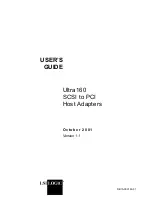
ZyXEL G-302 v3 User’s Guide
Chapter 2 Wireless LAN Network
27
2.2.3 WPA and WPA2
Wi-Fi Protected Access (WPA) is a subset of the IEEE 802.11i standard. WPA2 (IEEE
802.11i) is a wireless security standard that defines stronger encryption, authentication and
key management than WPA.
Key differences between WPA(2) and WEP are improved data encryption and user
authentication.
If both an AP and the wireless clients support WPA2 and you have an external RADIUS
server, use WPA2 for stronger data encryption. If you don't have an external RADIUS server,
you should use WPA2-PSK (WPA2-Pre-Shared Key) that only requires a single (identical)
password entered into each access point, wireless gateway and wireless client. As long as the
passwords match, a wireless client will be granted access to a WLAN.
If the AP or the wireless clients do not support WPA2, just use WPA or WPA-PSK depending
on whether you have an external RADIUS server or not.
Select WEP only when the AP and/or wireless clients do not support WPA or WPA2. WEP is
less secure than WPA or WPA2.
2.2.3.1 Encryption
Both WPA and WPA2 improve data encryption by using Temporal Key Integrity Protocol
(TKIP), Message Integrity Check (MIC) and IEEE 802.1x. WPA and WPA2 use Advanced
Encryption Standard (AES) in the Counter mode with Cipher block chaining Message
authentication code Protocol (CCMP) to offer stronger encryption than TKIP.
The encryption mechanisms used for WPA(2) and WPA(2)-PSK are the same. The only
difference between the two is that WPA(2)-PSK uses a simple common password, instead of
user-specific credentials. The common-password approach makes WPA(2)-PSK susceptible to
brute-force password-guessing attacks but it’s still an improvement over WEP as it employs a
consistent, single, alphanumeric password to derive a PMK which is used to generate unique
temporal encryption keys. This prevent all wireless devices sharing the same encryption keys.
(a weakness of WEP)
2.2.3.2 User Authentication
WPA and WPA2 apply IEEE 802.1x and Extensible Authentication Protocol (EAP) to
authenticate wireless stations using an external RADIUS database. WPA2 reduces the number
of key exchange messages from six to four (CCMP 4-way handshake) and shortens the time
required to connect to a network. Other WPA2 authentication features that are different from
WPA include key caching and pre-authentication. These two features are optional and may not
be supported in all wireless devices.
2.2.4 WPA(2)-PSK Application Example
A WPA(2)-PSK application looks as follows.
Summary of Contents for G-302
Page 1: ...ZyXEL G 302 v3 802 11g Wireless PCI Adapter User s Guide Version 2 00 Edition 2 5 2007...
Page 2: ......
Page 14: ...ZyXEL G 302 v3 User s Guide 14 List of Tables...
Page 23: ...ZyXEL G 302 v3 User s Guide Chapter 1 Getting Started 23 Figure 9 ZyXEL Utility Link Info...
Page 24: ...ZyXEL G 302 v3 User s Guide 24 Chapter 1 Getting Started...
Page 30: ...ZyXEL G 302 v3 User s Guide 30 Chapter 2 Wireless LAN Network...
Page 62: ...ZyXEL G 302 v3 User s Guide 62 Appendix B Management with Wireless Zero Configuration...
















































